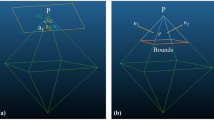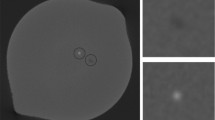Abstract
The real-time defect detection of metal additive manufacturing (AM) parts still remains a challenge in the industrial area. In this work, we use the laser-induced-breakdown spectroscopy (LIBS) combined with machine learning to distinguish between the defect-free and defect samples of metal AM parts, and obtain the characteristic spectra of both types of the samples with using the principal component analysis (PCA) for data preprocessing. Four classification models for the defect-free and defect samples are established as Naive Bayes, K-Nearest Neighbor, Decision Tree and Random Forest, and their performance is evaluated by a tenfold cross-validation method. The results show that among the four classification models, the Random Forest model with integrated learning performs the best. The overall accuracy achieves 98.75%, and the sensitivity and specificity are 99.17% and 98.33%, respectively. And the area under the curve (AUC) is 0.9834. This study shows that the LIBS technology can be used as a fast and accurate tool to identify the defects of AM parts; which can be further developed into a real-time, online, multi-element and nondestructive defect detection in the process of additive manufacturing.









Similar content being viewed by others
References
O. Bonny, B. Amit, Addit. Manuf. 22(10), 844–851 (2018)
M. Holmes, Met. Powder Rep. 69(6), 3 (2014)
L.E. Murr, J. Mater. Sci. Technol. 32(10), 987–995 (2016)
F. Blaya, P.S. Pedro, J.L. Silva, R. D’Amato, E.S. Heras, J.A. Juanes, J. Med. Syst. 42(3), 54 (2018)
V. Machi, Natl. Def. 102(768), 21–22 (2017)
N. Kladovasilakis, T. Kontodina, P. Charalampous, I. Kostavelis, D. Tzovaras, I.O.P. Conf, IOP Conf. Ser. Mater. Sci. Eng. 1037(1), 2018 (2021)
O. Andersson, A. Graichen, H. Brodin, V. Navrotsky, J. Eng. Gas Turbines Power 139(3), 031506.1-031506.9 (2017)
M.C. Brennan, J.S. Keist, T.A. Palmer, J. Mater. Eng. Perform. 30, 4808–4818 (2021)
H. Taheri, M.R.B.M. Shoaib, L.W. Koesterx, T.A. Bigelow, L.J. Bond, Int. J. Addit. Subtract. Mater. Manuf. 1(2), 172 (2017)
Z.M. Guo, P.J. Ni, Y.L. Dai, W.G. Zhang, K.D. Huang, J. Phys.: Conf. Ser. 1827(1), 012039 (2021)
V.K. Nadimpalli, G.M. Karthik, G.D. Janakiram, P.B. Nagy, Int. J. Adv. Manuf. Technol. 108(5), 1793–1810 (2020)
S.J. Wolff, S. Webster, N.D. Parab, B. Aronson, T. Sun, JOM 73, 189–200 (2021)
C. Zhao, K. Fezzaa, R.W. Cunningham, H. Wen, F.D. Carlo, L. Chen, A.D. Rollett, T. Sun, Sci. Rep. 7, 3602 (2017)
L.B. Guo, D. Zhang, L.X. Sun, S.C. Yao, Z. Wang, Front. Phys. 16(2), 22500 (2021)
F. Ruan, J. Qi, C. Yan, H. Tang, T. Zhang, H. Li, J. Anal. At. Spectrom. 32(11), 2194–2199 (2017)
R. Hernández-García, M.E. Villanueva-Tagle, F. Calderón-Piñar, M.D. Durruthy-Rodríguez, F.W.B. Aquino, E.R. Pereira-Filho, M.S. Pomares-Alfonso, Microchem. J. 130, 21–26 (2017)
T. Zhang, C. Yan, J. Qi, H. Tang, L. Hua, J. Anal. At. Spectrom. 32(10), 1960–1965 (2017)
V.N. Lednev, P.A. Sdvizhenskii, R.D. Asyutin, R.S. Tretyakov, M.Y. Grishin, A.Y. Stavertiy, S.M. Pershin, Addit. Manuf. 25, 64–70 (2019)
P.A. Sdvizhenskii, V.N. Lednev, R.D. Asyutin, M.Y. Grishin, R.S. Tretyakov, S.M. Pershin, J. Anal. At. Spectrom. 35, 246–253 (2020)
L. Song, W. Huang, X. Han, J. Mazumder, I.R.E. Trans, Ind. Electron. 64(1), 633–642 (2017)
M. Qasim, M. Anwar-Ul-Haq, M.S. Afgan, S.U. Haq, M.A. Baig, Plasma Sci. Technol. 22(7), 074007 (2020)
Y. Tang, L.B. Guo, J.M. Li, S.S. Tang, Z.H. Zhu, S.X. Ma, X.Y. Li, X.Y. Zeng, J. Duan, Y.F. Lu, J. Anal. At. Spectrom. 33(10), 1683–1688 (2018)
Acknowledgements
This paper was supported by National Natural Science Foundation of China (NSFC, No. 51374040), Department of Science and Technology of Jilin Province of China (Grant no. 20200403008SF) and Education Department of Jilin Province of China (Grant no. JJKH20210737KJ).
Author information
Authors and Affiliations
Corresponding authors
Additional information
Publisher's Note
Springer Nature remains neutral with regard to jurisdictional claims in published maps and institutional affiliations.
Rights and permissions
About this article
Cite this article
Lin, J., Yang, J., Huang, Y. et al. Defect identification of metal additive manufacturing parts based on laser-induced breakdown spectroscopy and machine learning. Appl. Phys. B 127, 173 (2021). https://doi.org/10.1007/s00340-021-07725-3
Received:
Accepted:
Published:
DOI: https://doi.org/10.1007/s00340-021-07725-3




